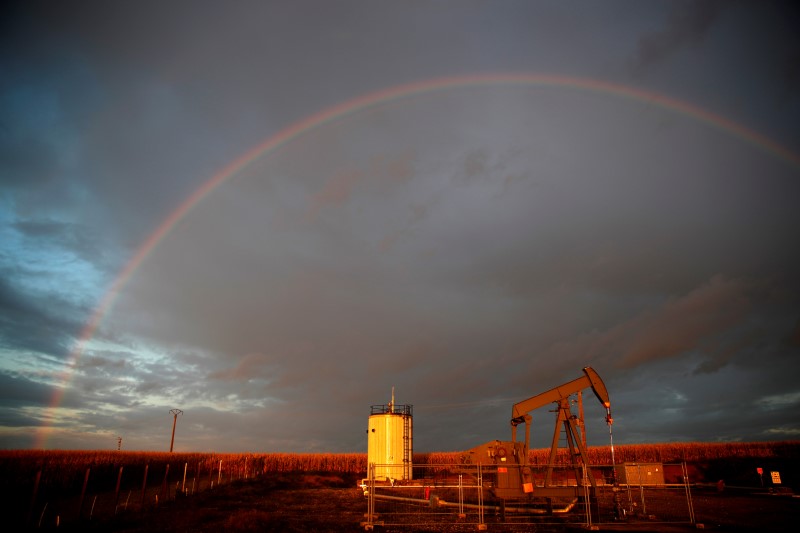(Bloomberg) -- The prospect of a coronavirus vaccine has transformed how oil traders are evaluating the market’s prospects for the second half of 2021.
Headline Brent oil futures surged above $45 a barrel on Wednesday, a 15% increase from where they ended last week. But that’s a price for supplies in January, when the direct impact on oil demand from any vaccine is likely to be limited because of the time it would take for an immunization program to be rolled out.
What’s been more revealing is what traders call deferred timespreads. These gaps in price between contracts in the future -- which serve as a gauge of expectations for market strength -- are soaring. June 2021 is now trading at about 55 cents a barrel below December 2021. Late last week, it was at a $1.35 discount.
“This is a sigh of relief to some extent by the market,” said Karim Fawaz, who leads the energy advisory service at consultant IHS Markit. “The short-term is still quite challenged, demand is looking quite weak. The second half of 2021 is when we expect to see that demand recovery start to take hold.”
On Monday, Pfizer Inc. (NYSE:PFE) and BioNTech SE (NASDAQ:BNTX) said a vaccine prevented more than 90% of symptomatic infections in a trial of tens of thousands of volunteers. Oil was just one of many markets that surged.
Uncertain Rollout
The optimistic view of the oil market in 2021 is shared to varying degrees across Wall Street. Crude markets are likely to see sharply higher prices next summer as the demand outlook improves, Goldman Sachs Group Inc (NYSE:GS). wrote in a report this week. JPMorgan Chase (NYSE:JPM) & Co. anticipates global oil demand will surpass its pre-Covid levels in December next year.
The uncertain timing of a vaccine rollout, and accompanying demand rebound, complicates the picture for Organization of Petroleum Countries and allied producers as they try to avoid a glut of crude from building. They meet in less than a month to discuss whether to start adding barrels to the market in 2021 as they had previously planned.
Though the optimism is building, there are still plenty of hurdles. Some regions, most notably Europe, are currently going through second lockdown measures, eroding their demand. High frequency traffic data suggest that, taken as a whole, a rebound in road traffic appears to have stalled. There is also the more lasting economic hit that the virus has dealt to economies to consider.
It’s a similar picture in the U.S. market too. The difference in price between December West Texas Intermediate futures for 2021 and 2022 --- a popular trade among oil focused hedge funds -- has also reached the narrowest since March. A big part of the strength has been producers hedging their forward output, effectively putting pressure on later prices while more immediate ones strengthen.
“We think all of that is going to take time and is going to play out more strongly in the second half of next year,” said Richard Bronze, co-founder of consultant Energy Aspects Ltd. “If you have multiple vaccines, all of which are showing strong effectiveness, then perhaps you can look at the more optimistic range of scenarios for how quickly you can have widespread rollout of vaccination.”
For now though, hopes for a return to normal in the later months of 2021 are growing. That has lifted everything from oil refining shares to fuel margins in recent days. For the final quarter of next year, even jet fuel, the most beleaguered oil product in the oil market during the pandemic, has rallied to its strongest level since July.
“Expectations around the path to economic recovery and thus oil demand are changing,” said Harry Tchilinguirian, oil strategist at BNP Paribas (OTC:BNPQY) SA. “If a vaccine is approved, the effect will not be immediate on the economy and oil demand, but anticipation around the path to recovery will have changed.”
©2020 Bloomberg L.P.
